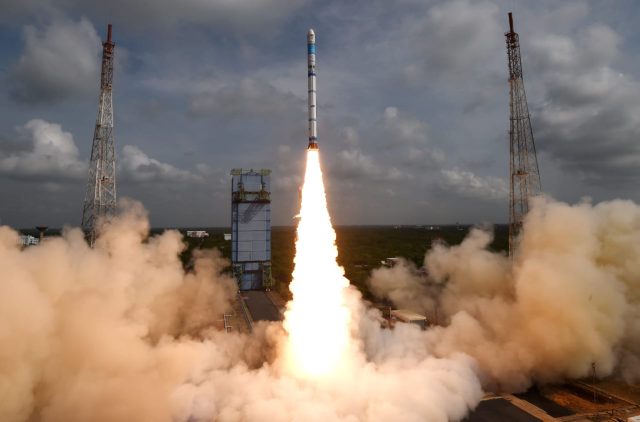The EOS-08 was launched aboard the Small Satellite Launch Vehicle (SSLV)-D3, marking a significant milestone in ISRO’s efforts to deploy advanced microsatellites. The satellite, built on the Microsat/IMS-1 bus, is equipped with three sophisticated payloads: an Electro Optical Infrared Payload (EOIR), a Global Navigation Satellite System-Reflectometry payload (GNSS-R), and a SiC UV Dosimeter. These payloads enable a wide range of applications, including satellite-based surveillance, environmental monitoring, and disaster management.
Operating in a Circular Low Earth Orbit (LEO) at an altitude of 475 km, EOS-08 carries cutting-edge technology designed for various mission objectives. The satellite features a miniaturized Antenna Pointing Mechanism, phased array antenna, and a flexible solar panel, which enhance communication, power generation, and structural integrity. With a mission life of one year, the 175.5 kg satellite is expected to significantly contribute to advancements in remote sensing and data collection.
“EOS-08 represents a leap forward in our satellite technology, showcasing innovations that will be critical for future missions,” said an ISRO spokesperson.
The launch of EOS-08 aligns with ISRO’s broader goals of advancing satellite technology and enhancing India’s capabilities in space-based observation and data collection. The mission follows the successful deployment of other Earth observation satellites and demonstrates ISRO’s growing expertise in developing compact, high-performance microsatellites.
EOS-08’s successful deployment is expected to bolster India’s ability to monitor natural disasters, environmental changes, and other critical parameters. The satellite’s innovative features, such as its miniaturized systems and advanced payloads, could set new standards for future Earth observation missions.
While the EOS-08 mission showcases significant advancements, challenges remain in ensuring the long-term sustainability of such technologies, especially given the fast-paced developments in global space research.
The mission also highlights ISRO’s focus on indigenization, with solar cell fabrication processes and Nano-Star Sensor applications reflecting India’s growing self-reliance in space technology.
With the successful launch of EOS-08, ISRO continues to push the boundaries of satellite technology, paving the way for more sophisticated and versatile Earth observation missions in the future.











